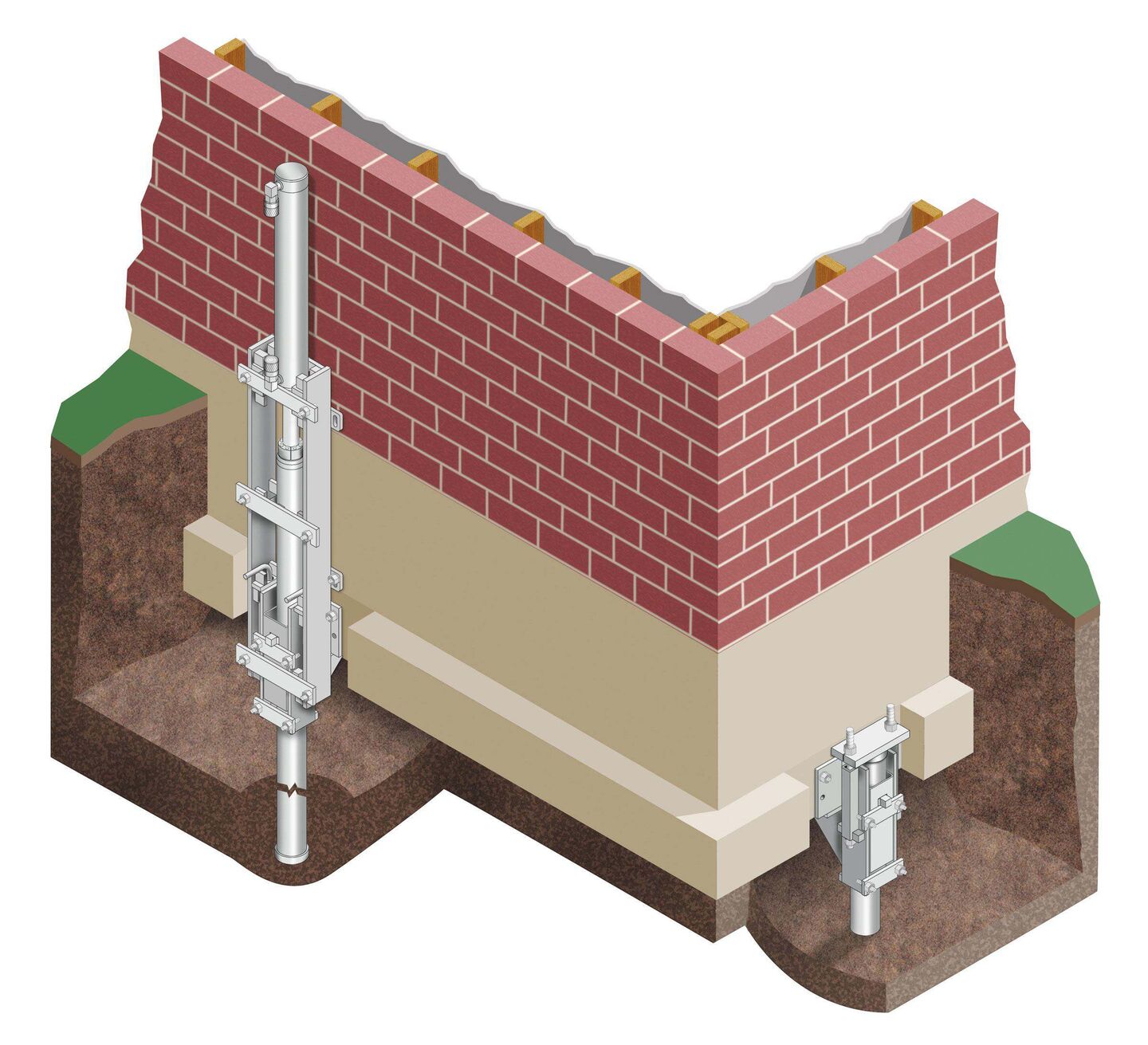Foundation Repairs: Hydraulic Push Piers vs. Pressed Concrete Pilings

When your home suffers structural foundation damage, it’s pretty serious business. It’s not a repair you can put off because the damage to your foundation – and the rest of your home – can only get worse. It’s also not a repair you will want to trust to just any contractor, or any repair method, until you’ve done thorough research on what’s best for your home and family.
When your foundation has dropped and your home requires underpinning to regain and maintain stability, it’s worth considering all reasonable methods but some are just better than others, which has been proven over time. A fair comparison will give you the best information.
Why Hydraulic Push Piers Are Better than Pressed Concrete Pilings to Re-stabilize a Dropped Foundation
One thing that will tell you a lot about a structural foundation repair method is the way in which it is installed.
Hydraulic Push Piers – Hydraulic push piers are constructed of heavy-duty steel piping. The installer begins the process by digging a small hole next to the foundation and cutting a notch in the spread footing below. He then installs a lift bracket in the notch, mounts a hydraulic drive on it and then uses the hydraulics to drive the steel pier into the ground by sections until it reaches a load-bearing stratum. After the designated number of piers has been installed, a hydraulic pump raises the house back to level and the installer permanently attaches the lift brackets to the piers. The holes are refilled, leaving the repairs invisible.
Pressed Concrete Pilings – Pressed concrete pilings are pre-cast cylinders of concrete, approximately one foot long and six inches in diameter. The installer begins by digging a two-foot hole next to the foundation and uses a hydraulic ram to drive the cylinders, one on top of the other into the soil until significant resistance is felt. A concrete cap is then added. Bottle jacks are used to lift the house as close as possible to its original position, additional cylinders and metal shims fill the space between the piling’s cap and the foundation and the house is lowered onto the pilings. The holes are then backfilled.
There are a number of reasons why hydraulic push piers are better than pressed concrete pilings for raising and stabilizing a dropped foundation:
Advantages of Steel Push Piers
- Hydraulic piers extend all the way to the load-bearing stratum
- Hydraulic piers have unlimited lifting capacity
- No further dropping or settlement will occur; foundation is completely stabilized
- Installation requires no heavy equipment
- Depending on number of piers needed, installation is done quickly
Disadvantages of Pressed Concrete Pilings
- Installation depth limited to five to seven feet
- Further settling can occur due to position in potentially unstable soil
- “Skin friction” from surrounding soil may pull down concrete pilings
- If a cylinder is broken during installation it cannot be removed or repaired
- Pilings must be adjusted and/or shimmed annually leading to further damage to aboveground construction
- Installation contractors experience high turnover rate due to numerous callbacks
The only possible advantage to using pressed concrete pilings is their lower cost but the need for regular maintenance and the likelihood of further damage pretty much offset any cost savings.
Foundation repair is serious business. Any type of repair is disruptive and costly and the potential result of doing it the wrong way should cause every homeowner to make his or her decision very carefully. By choosing hydraulic push piers, the homeowner knows that the home will be permanently stable and that the risk of further damage to the home and its foundation has been eliminated.
Of course, the repair is only as good as the company that installs it. At U.S. Waterproofing, our specially trained advisors and installers use only the highest quality materials and equipment in installing hydraulic push piers and have the finest technical and engineering resources to draw on when needed. Why not ask us for a free consultation on your foundation?




